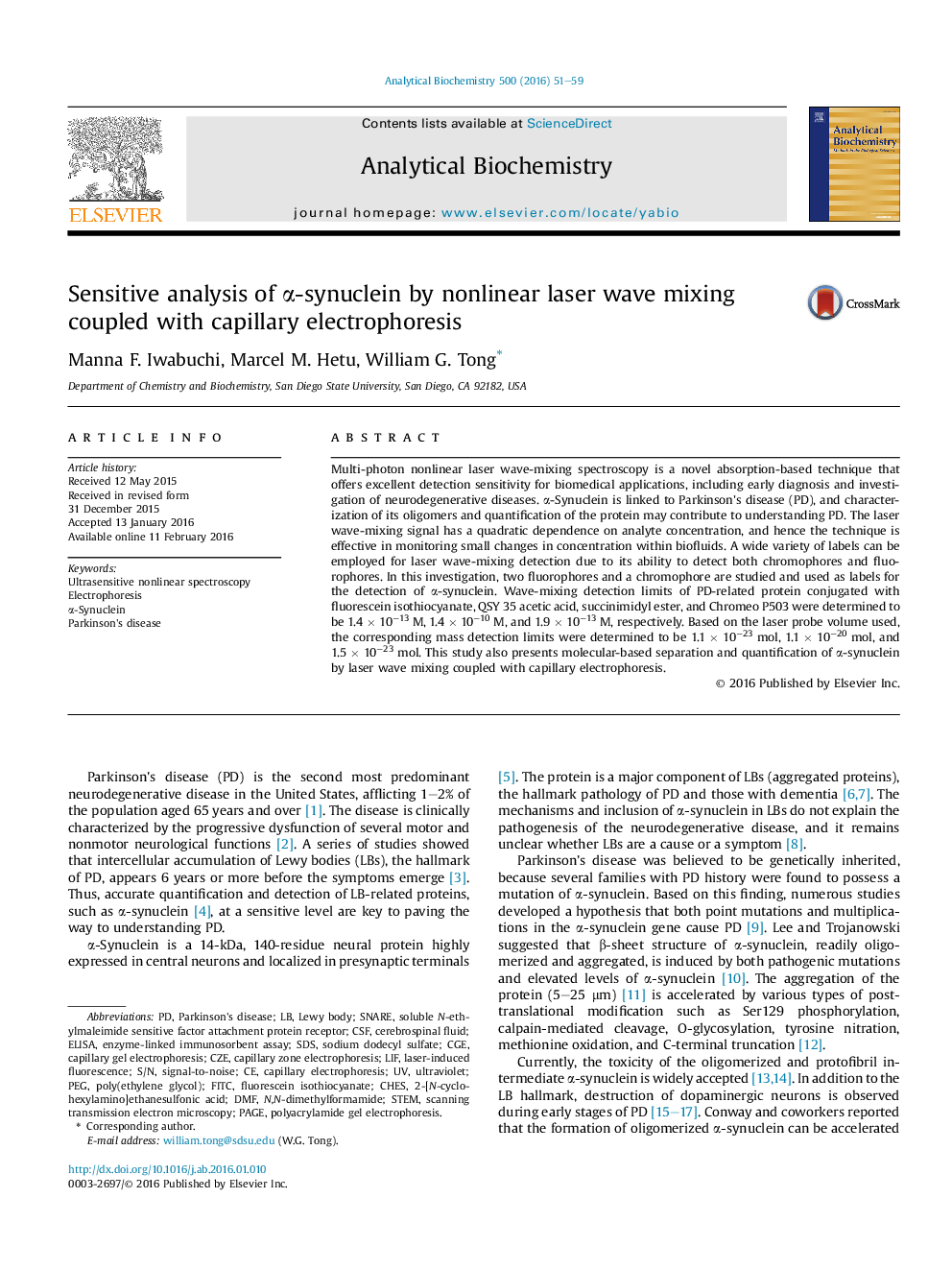| Article ID | Journal | Published Year | Pages | File Type |
|---|---|---|---|---|
| 1172888 | Analytical Biochemistry | 2016 | 9 Pages |
•Ultrasensitive detection of α-synuclein using optical absorption-based laser method.•Monitor small changes in α-synuclein concentration levels by sensitive laser wave-mixing detection.•Modification of Chromeo P503TM reaction to detect protein at trace concentration levels.•Examine α-synuclein conformation using laser wave mixing coupled with capillary gel electrophoresis.•Fast analysis time and minimum sample preparation.
Multi-photon nonlinear laser wave-mixing spectroscopy is a novel absorption-based technique that offers excellent detection sensitivity for biomedical applications, including early diagnosis and investigation of neurodegenerative diseases. α-Synuclein is linked to Parkinson's disease (PD), and characterization of its oligomers and quantification of the protein may contribute to understanding PD. The laser wave-mixing signal has a quadratic dependence on analyte concentration, and hence the technique is effective in monitoring small changes in concentration within biofluids. A wide variety of labels can be employed for laser wave-mixing detection due to its ability to detect both chromophores and fluorophores. In this investigation, two fluorophores and a chromophore are studied and used as labels for the detection of α-synuclein. Wave-mixing detection limits of PD-related protein conjugated with fluorescein isothiocyanate, QSY 35 acetic acid, succinimidyl ester, and Chromeo P503 were determined to be 1.4 × 10−13 M, 1.4 × 10−10 M, and 1.9 × 10−13 M, respectively. Based on the laser probe volume used, the corresponding mass detection limits were determined to be 1.1 × 10−23 mol, 1.1 × 10−20 mol, and 1.5 × 10−23 mol. This study also presents molecular-based separation and quantification of α-synuclein by laser wave mixing coupled with capillary electrophoresis.
